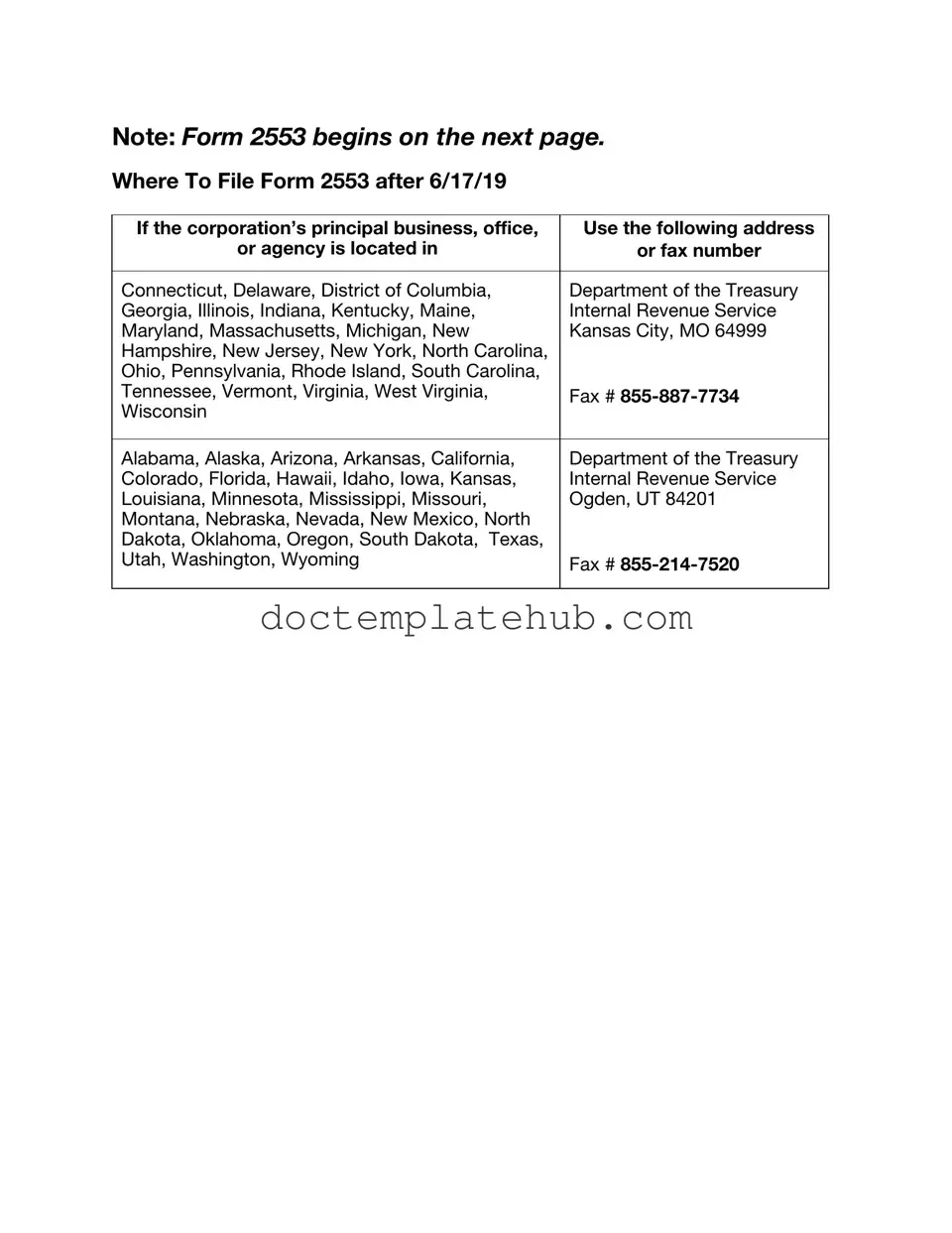The IRS Form 8832, also known as the Entity Classification Election, is similar to Form 2553 in that it allows businesses to choose how they want to be classified for tax purposes. While Form 2553 is specifically for S corporations, Form 8832 provides a broader option for entities to elect to be treated as a corporation, partnership, or disregarded entity. Both forms require careful consideration of the tax implications and eligibility criteria, ensuring that the business structure aligns with the owners' financial goals.
Form 1065, the U.S. Return of Partnership Income, shares similarities with Form 2553 in that both forms are used by entities that want to report income and losses for tax purposes. While Form 2553 is used to elect S corporation status, Form 1065 is filed by partnerships to report their income, deductions, and credits. Both forms require detailed financial information and must be filed annually, emphasizing the importance of accurate record-keeping for tax compliance.
The IRS Form 1120, U.S. Corporation Income Tax Return, is another document that parallels Form 2553. This form is used by corporations to report their income, gains, losses, and deductions. Like Form 2553, it plays a crucial role in determining the tax obligations of a business. However, while Form 2553 is for electing S corporation status, Form 1120 is specifically for C corporations, which are taxed differently. Understanding the distinctions between these forms is vital for business owners when deciding their tax structure.
Form 941, the Employer’s Quarterly Federal Tax Return, is related to Form 2553 in that both are essential for businesses with employees. While Form 2553 is focused on electing S corporation status, Form 941 is used to report income taxes, Social Security tax, and Medicare tax withheld from employee wages. Both forms require timely filing and accurate reporting to maintain compliance with IRS regulations, highlighting the importance of managing payroll and tax obligations effectively.
Form 990, the Return of Organization Exempt From Income Tax, is another form that shares some characteristics with Form 2553. Nonprofit organizations use Form 990 to report their financial information to the IRS. While Form 2553 is concerned with tax elections for corporations, Form 990 ensures transparency and accountability for tax-exempt organizations. Both forms are crucial for maintaining compliance with tax laws and provide insights into the financial health of the respective entities.
Form 1065-B, the U.S. Return of Income for Electing Large Partnerships, is similar to Form 2553 in that it is used by partnerships that have elected to be treated differently for tax purposes. This form is specifically for large partnerships that choose to be taxed as a partnership rather than as a corporation. Both forms require careful planning and understanding of tax implications, as they influence how income and losses are reported and taxed.
Form 1120-S, U.S. Income Tax Return for an S Corporation, is directly related to Form 2553, as it is the form that S corporations must file annually to report their income, deductions, and credits. After electing S corporation status with Form 2553, businesses must file Form 1120-S to comply with IRS requirements. This connection underscores the importance of understanding both forms in the context of maintaining S corporation status and fulfilling tax obligations.
Lastly, Form W-2, the Wage and Tax Statement, is relevant to Form 2553 in that both documents are critical for businesses with employees. Form W-2 reports the annual wages paid to employees and the taxes withheld. While Form 2553 focuses on the election of S corporation status, Form W-2 is essential for reporting employee compensation and ensuring compliance with tax withholding requirements. Both forms are vital for maintaining proper tax records and fulfilling employer responsibilities.
